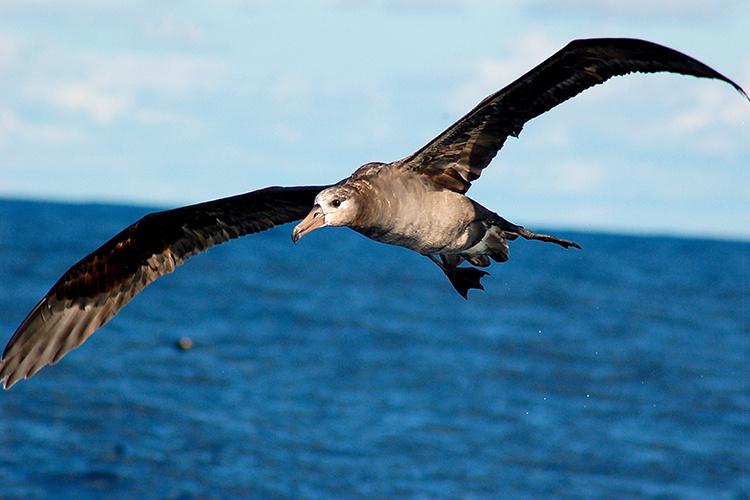To help reduce harmful interactions with seabirds encountered during longline fishing operations, fishermen in the Pacific Islands pelagic longline fisheries are required to comply with NOAA Fisheries’ seabird mitigation (avoidance and handling) requirements (see 50 CFR 665.815).
In 2000, NOAA Fisheries estimated that there were nearly 2,500 seabird interactions in the Hawaiʻi longline fisheries. However, since implementing a suite of seabird avoidance and handling requirements beginning in 2001, the fishery has significantly reduced the number of interactions with seabirds.
NOAA Fisheries strives to continue to reduce harmful interactions within the Hawaiʻi longline fisheries by continuing to research and develop effective mitigation techniques. In 2024, we announced new regulations for the deep-set tuna fishery requiring a tori line, or streamer line, in place of less effective requirements. Field trials demonstrated that the tori lines are significantly more effective in deterring seabirds from the fishing bait than the existing measures and will further protect seabirds in the fishery.
Longline vessel owners and operators are also required to attend a Protected Species Workshop once a year to ensure that they are well versed on the most up-to-date interaction mitigation techniques for protected species including seabirds.
Current measures to protect seabirds include:
- Weighted branchlines
- Tori lines
- Side-setting with a bird curtain
- Night-setting
- Blue-dyed baits
- Strategic offal discards
- Specific fish-type baits
- Best practices for seabird handling and release


